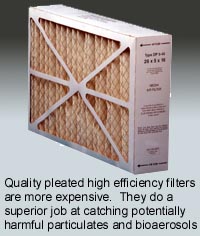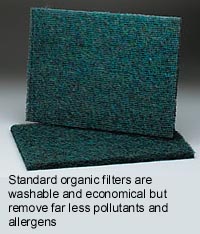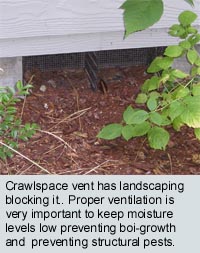Builders have made great strides to make our homes energy efficient. This has resulted in new problems with the quality of the air. We typically spend 12 or more hours a day in our homes resulting in potentially long term exposure to unhealthy air. Some homes have from 2 to 100 times more polluted air than outside. This pollution can cause serious health problems. Dust, smoke, pet dander, mold, mildew, and dust mites are all very common in the typical home. We have researched this problem and found several tips to improve air quality.
Wood heating sources: Bathrooms: Inspect vents and keep them clean:
|
skip to main |
skip to sidebar

(206) 295-4330
See our web site for more information
Schedule your inspection

Best Seattle Home Inspectors!
See our web site for more information
Schedule your inspection

Best Seattle Home Inspectors!
JJ & Suzanne Greive
Two Certified and State Licensed Inspectors
for all your inspection needs
Existing Home Inspections - New Home Inspections - Pre-sale Inspections - Hourly Inspection
Service - Warranty Inspections
Never buy without an inspection, it could save your life. Really! See Cheryl's story here
We accept credit card payment options
for your convenience
![]()
![]()
King, Pierce, Snohomish and Thurston Counties
Homeowners links

Two Certified and State licensed Home Inspectors for complete and efficient home inspections. All reports are printed on-site including full color photos and published on-line from our mobile office. We bring advanced tools, pest ID lab equipment and wireless internet connection to every job. This allows us to provide our clients the information they need to have confidence in their purchase. Schedule your inspection TODAY - Call 206-295-4330 or email - Info@hipspro.com

 Fan forced furnaces:
Fan forced furnaces: Keep the filters clean, replacing them every 60 to 90 days. High efficiency air filters will capture up to 30 time more pollutants then standard filters. The spun organic/fiberglass filters are the poorest choice, so avoid the reusable washable types. If you do not have a fan forced furnace, you might consider using a portable air cleaner. The units have a huge range in costs and effectiveness, read more about
Keep the filters clean, replacing them every 60 to 90 days. High efficiency air filters will capture up to 30 time more pollutants then standard filters. The spun organic/fiberglass filters are the poorest choice, so avoid the reusable washable types. If you do not have a fan forced furnace, you might consider using a portable air cleaner. The units have a huge range in costs and effectiveness, read more about  keeping crawlspace moisture low. Beside health issues, excessive moisture in crawlspaces is a conducive condition to wood destroying organisms. If you have combustion appliances, check the air intake vents to assure they are not clogged. Hot water heaters, furnaces, gas stoves etc are possible sources of carbon monoxide without a good supply of fresh air. The American Lung Association recommends annual service of all combustion appliances. At a minimum install
keeping crawlspace moisture low. Beside health issues, excessive moisture in crawlspaces is a conducive condition to wood destroying organisms. If you have combustion appliances, check the air intake vents to assure they are not clogged. Hot water heaters, furnaces, gas stoves etc are possible sources of carbon monoxide without a good supply of fresh air. The American Lung Association recommends annual service of all combustion appliances. At a minimum install 
